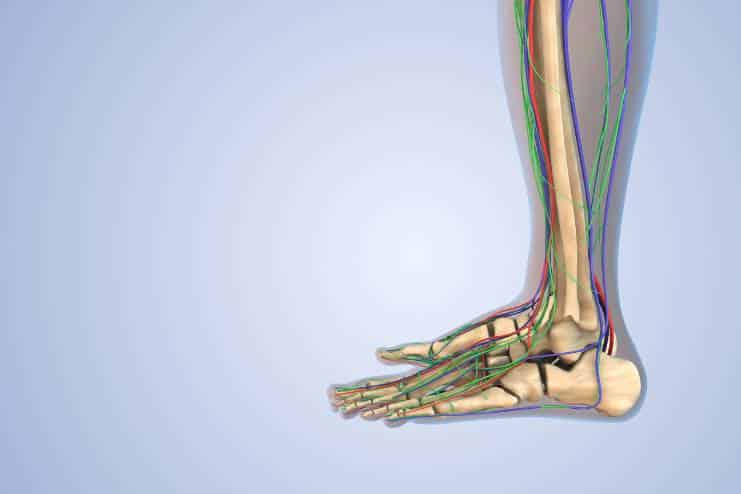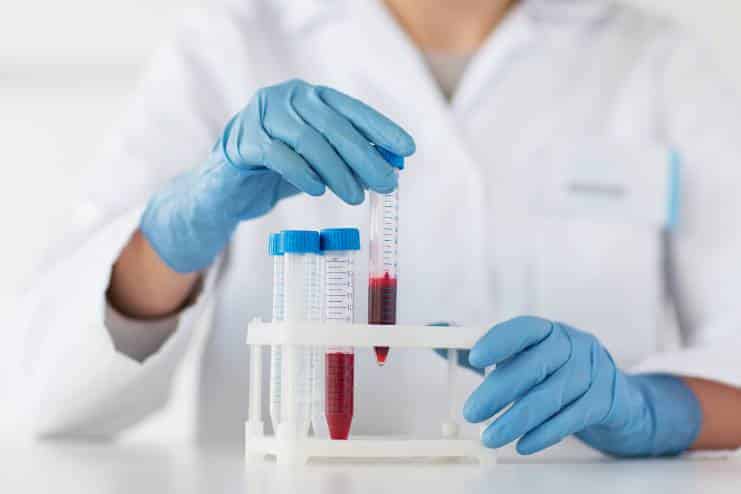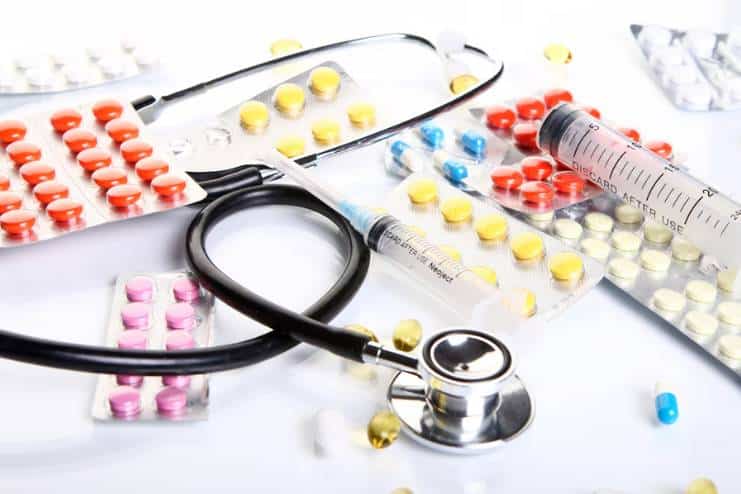Affiliate Disclaimer
Some links in this article are affiliate links. We may earn a small commission if you make a purchase through these links, at no extra cost to you. We only recommend products we find useful to our readersHereditary disorders such as Factor V Leiden, are genetically determined conditions predisposing a person to the formation of abnormal clotting in veins and arteries. They can cause serious health complications, including deep vein thrombosis (DVT), pulmonary embolism (PE), and stroke. The management of chronic blood clotting disorders is, therefore, important to prevent these life-threatening events.
Effective management incorporates lifestyle changes, medications, and follow-up with one’s doctor. Anticoagulant medications, also referred to as blood thinners, may be prescribed to patients so that blood clots do not form.
Besides the treatment provided by the medical fraternity, healthy habits such as a wholesome diet, regular exercise, not smoking, and stress management can help prevent complications. Periodic visits to health professionals are important for monitoring the condition and refreshing treatments. Through increased awareness and a little self-management persons with chronic blood-clotting disorders can live healthier lives, reducing the chances of serious health complications.
Understanding Chronic Blood Clotting Disorders

Factor V Leiden is a common genetic blood coagulation disorder that impairs the human body’s ability to control blood clotting. Such disorders produce an overactive tendency to form clots, which is referred to as hypercoagulability, or weak tendency to form clots, also known as bleeding disorders, both potentially life-threatening.
What Is Chronic Blood Clotting and Its Types
The normal process of blood clotting is disturbed in disorders of chronic blood clotting. Types include the following:
- Factor V Leiden: A genetic mutation predisposing an individual to abnormal clotting.
- Hemophilia: A genetic disorder where the blood lacks clotting factors and leads to excessive bleeding.
- Von Willebrand’s Disease: A condition that prevents blood from clotting due to low levels of the Von Willebrand Factor.
Genetics and Risk Factors
Many chronic blood clotting disorders are inherited. For example, Factor V Leiden is one that is passed on genetically and causes an increased risk of clotting. Hemophilia is associated with mutations in the X chromosome and mainly affects males. Von Willebrand’s is inherited or may develop spontaneously. Risk factors also include:
- Family history: A good predictor of inherited disorders
- Lifestyle factors: Prolonged immobility, obesity, smoking, and hormone-based medications (for example, birth control pills)
Diagnosis and Management
Diagnosis is made by a patient’s history, physical examination, and specific tests, including:
- Genetic testing: To diagnose genetic defects such as Factor V Leiden Mutation
- Clotting factor assays: To measure their levels
- Imaging studies: To diagnose thrombi
Management includes lifestyle modifications, regular follow-up of with physicians, and medications like anticoagulants, which help in preventing or treating issues of clotting. Early diagnosis and effective treatment are critical in reducing the potentially serious complications that may be associated with these disorders.
Recognizing Symptoms and Emergency Measures

Blood clots can be dangerous and require immediate action. Knowing blood clot symptoms and how and when to act upon them may save your life. Here’s what you need to know:
Symptoms Requiring Immediate Medical Attention
- Deep Vein Thrombosis (DVT):
- Leg Pain or Swelling: Sudden pain or swelling, predominantly in one leg, associated with increased warmth or redness.
- Tenderness: Pain or tenderness in the calf or thigh, largely on standing or walking.
- Pulmonary Embolism (PE):
- Shortness of Breath: Sudden onset breathlessness or air hunger.
- Chest Pain: Sharp, stabbing chest pain that may become worse on deep breathing or coughing.
- Coughing Up Blood: The cough or saliva contains blood.
- Stroke:
- Sudden Numbness: Numbness, weakness, or sudden tingling sensation on one side of face, arm, or leg.
- Difficulty Speaking: Sudden confusion, trouble speaking, or understanding speech.
- Vision Problems: Sudden difficulty seeing in one or both eyes.
- Heart Attack:
- Chest Discomfort: Pain, pressure, or squeezing at the middle of the chest that lasts for more than a few minutes or goes away and comes back.
- Pain in Other Areas: Pain or discomfort in one or both arms—the back, neck, jaw, or stomach.
Step-by-Step Guide for Emergency Response
- Seek Immediate Medical Help: If you or another individual has signs and symptoms of a blood clot, contact emergency services immediately.
- Stay Calm and Safe: Remain as calm as possible. If he/she is awake, try and make the person comfortable; keep them as still as possible.
- Provide Information: When the help arrives or when you get to the hospital, try to give as much information as you can on the symptoms, their commencement, and all the history relevant to the illness.
- Follow Medical Advice: When diagnosed, one should adhere to the doctor’s advice on treatment and management. This may be regarding medication, lifestyle changes, and getting other tests.
Recognize the symptoms of blood clots and act quickly, as it will tremendously impact survival and prevent serious complications. Always consult a healthcare professional for guidance tailored to your specific needs.
Regular Medical Check-Ups

People with chronic blood clotting disorders need regular medical checkups to help them learn to deal with the condition and avert major complications. Checkups ensure that changes in the disorder can be addressed and that the treatment plan is working.
As part of these follow-up visits, doctors are, in most cases, likely to conduct the following tests and monitoring strategies:
- Coagulation Tests: Results of regular testing, including prothrombin time (PT), activated partial thromboplastin time (aPTT), and clotting factor assays, indicate whether the blood is clotting well and if medication should be adjusted.
- Genetic Testing: This may be indicated to be periodically conducted in a case like Factor V Leiden for screening for altered or extra genetics that might give rise to clotting risks.
- Imaging Studies: There are ultrasounds or other imaging techniques to identify a blood clot, particularly deep vein thrombosis (DVT) or pulmonary embolism (PE).
- Medication Monitoring: This assures regular monitoring that anticoagulants or other medications are appropriately dosed, and they effectively control the disorder without excessive bleeding or other related side effects.
These regular check-ups allow for early intervention and adjustment of treatment plans, therefore reducing the risks of complications.
Medication Management

Medication management is essential in preventing harmful blood clots from forming and reducing complications in patients with disorders in blood coagulation. Blood thinners are more common designations for anticoagulant medications.
Common Anticoagulants
- Warfarin (Coumadin): This anticoagulant works by inhibiting the actions of vitamin K, a vitamin necessary in the formation of blood clots. The international normalized ratio should be regularly assessed for dosing adjustments and efficacy.
- Direct Oral Anticoagulants (DOACs): Examples are rivaroxaban (Xarelto), apixaban (Eliquis), and dabigatran (Pradaxa). The DOACs target certain clotting factors and generally require less frequent monitoring compared to Warfarin.
- Heparin: It is a drug used widely in hospitals, most commonly given intravenously or subcutaneously. It acts fast in the anticoagulation process and is used for short-term management of blood clots.
Importance of Adherence
Blood clotting disorders can be treated by adhering to the prescribed medication treatment regimen. This ensures that the level of anticoagulants in the blood remains at a therapeutic level to prevent the development of clots and reduce the likelihood of bleeding disorders.
Patients should closely follow the instructions from their doctor and regularly schedule check-ups to determine any changes in the condition and medication.
Non-adherence can lead to severe health issues, including recurrent clots or excessive bleeding. Maintaining open communication with healthcare providers about any side effects or concerns is essential for optimal management and adjustment of therapy as needed.
Lifestyle Adjustments

Managing blood clotting disorders involves more than just medication; lifestyle adjustments are crucial in supporting vascular health and reducing the risk of clots. Here’s a guide to making effective lifestyle changes:
Diet
A balanced diet is vital for vascular health.
Foods to Include:
- Fruits and Vegetables: Antioxidant and vitamin-rich, they support overall health and reduce inflammation. Pick a rainbow of colors, including berries, leafy greens, and citrus fruits.
- Whole Grains: Fiber-rich oats, quinoa, and brown rice promote heart health and help maintain optimal blood pressure.
- Lean Proteins: Include fish, poultry, and legumes. Fatty fish, such as salmon and trout, are rich in omega-3 fatty acids that may help reduce the tendency of blood to clot.
- Nuts and Seeds: Almonds, walnuts, and flax seeds are rich in healthy fats that support cardiovascular health.
Foods to Avoid
- High-Sodium Foods: Processed foods, canned soups, and salty snacks raise blood pressure and may lead to vascular damage.
- Trans Fats and Saturated Fats: Found in fried foods, baked goods, and some margarines, these can elevate cholesterol levels and worsen clotting disorders.
- Excessive Sugar: Cut down on sugary drinks and sweets to help maintain a healthy weight and reduce inflammation in the body.
Exercise
Exercising regularly will help your circulation and maintain vascular health in general. Safe Activities Include:
- Walking or Jogging: Low-impact exercises improve blood circulation without putting excessive stress on the joints.
- Swimming: Is an excellent workout, easy on the joints yet providing an overall muscle workout.
- Cycling: Provides cardiovascular benefits and is easy on knees and hips.
However, consult your doctor before engaging in any new exercise regimen if you are prone to blood clots or other health conditions.
Smoking Cessation
Smoking damages blood vessels and encourages clotting, which increases blood clot risk. Quitting strategies include:
- Seeking Support: Utilize resources such as smoking cessation programs, counseling, and support groups.
- Nicotine Replacement Therapy: Products like patches, gum, or lozenges that help in controlling the cravings.
- Behavioral Strategies: Identify triggers and develop coping mechanisms to avoid smoking.
Hydration
Proper hydration is crucial for maintaining healthy blood viscosity. Stay Well-Hydrated By:
- Drinking Plenty of Water: Drink at least eight glasses of water daily and more if you’re physically active or live in a hot climate.
- Limiting Dehydrating Beverages: Limit alcohol and caffeine intake as it dehydrates the body.
These simple lifestyle changes, like starting a heart-healthy diet, getting regular exercise, quitting smoking, and drinking enough water, can help keep your blood clotting disorder in check and improve your vascular health.
Support Systems and Resources

Managing chronic blood clotting disorders can be challenging, but support systems and patient education are vital in navigating these challenges effectively.
Role of Support Groups and Patient Education
Support groups provide a platform to discuss one’s experience and coping mechanisms, a means of getting emotional support from others in similar conditions, and practical advice. Patient education is equally important in empowering patients with knowledge about their condition, treatment options, and necessary lifestyle adjustments.
Useful Healthcare Resources and Organizations in the USA
- National Blood Clot Alliance (NBCA): This organization provides extensive educational materials, support resources, and advocacy initiatives to help individuals manage blood clotting disorders effectively.
- American Society of Hematology (ASH): ASH offers a wealth of information on blood disorders, including resources for patients and healthcare professionals and guidelines for managing blood clotting issues.
- Blood Clots Awareness Foundation: This organization focuses on increasing awareness about blood clots and providing support and education to those affected.
- American Heart Association (AHA): While the AHA is broader in scope, it provides valuable information on heart health and stroke prevention, which are relevant to blood clot management.
Connecting with these organizations can provide critical support, valuable information, and a community of individuals and professionals dedicated to managing blood clotting disorders.
Conclusion
Managing chronic blood clotting disorders requires a comprehensive approach that includes regular medical check-ups, diligent medication management, lifestyle adjustments, and awareness of symptoms. Key strategies involve frequent consultations with healthcare providers to monitor and adjust treatments, adhering strictly to prescribed anticoagulant medications, and making lifestyle changes such as maintaining a healthy diet, engaging in safe physical activities, and quitting smoking. Staying well-hydrated is also crucial for preventing clots.
A proactive approach is essential for effectively managing these conditions. By staying informed and vigilant, individuals can significantly reduce the risk of complications associated with blood clotting disorders. Regular follow-ups and adherence to medical advice not only help in managing symptoms but also in improving overall quality of life. Engaging with support systems and educational resources further empowers individuals to navigate their condition with confidence and resilience.
Taking these steps ensures better control over blood clotting disorders and enhances the effectiveness of treatment, contributing to long-term health and well-being.
References
- https://www.medicalnewstoday.com/articles/coagulation-disorders
- https://www.metropolisindia.com/blog/health-wellness/blood-clotting-disorders-types-symptoms-causes-diagnosis-treatment-metropolis-truhealth-blog
- https://www.webmd.com/dvt/foods-help-prevent-dvt
- https://www.webmd.com/dvt/what-know-dvt-exercise
- https://www.bestveintreatment.com/blog/the-link-between-smoking-and-dvt
- https://www.louisemallenderosteopathy.co.uk/dehydration-and-blood-clots/
In this Article

















